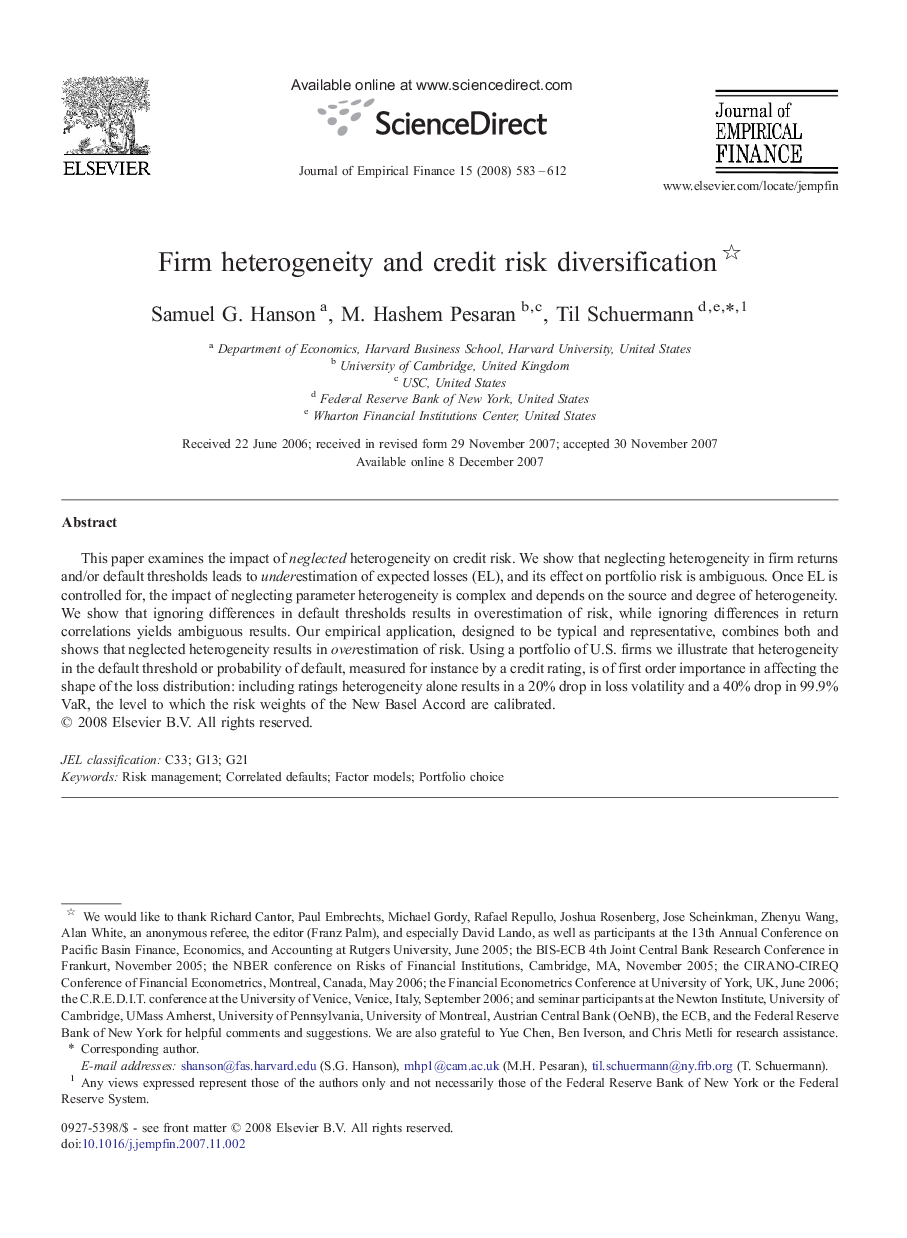| Article ID | Journal | Published Year | Pages | File Type |
|---|---|---|---|---|
| 958701 | Journal of Empirical Finance | 2008 | 30 Pages |
This paper examines the impact of neglected heterogeneity on credit risk. We show that neglecting heterogeneity in firm returns and/or default thresholds leads to underestimation of expected losses (EL), and its effect on portfolio risk is ambiguous. Once EL is controlled for, the impact of neglecting parameter heterogeneity is complex and depends on the source and degree of heterogeneity. We show that ignoring differences in default thresholds results in overestimation of risk, while ignoring differences in return correlations yields ambiguous results. Our empirical application, designed to be typical and representative, combines both and shows that neglected heterogeneity results in overestimation of risk. Using a portfolio of U.S. firms we illustrate that heterogeneity in the default threshold or probability of default, measured for instance by a credit rating, is of first order importance in affecting the shape of the loss distribution: including ratings heterogeneity alone results in a 20% drop in loss volatility and a 40% drop in 99.9% VaR, the level to which the risk weights of the New Basel Accord are calibrated.
